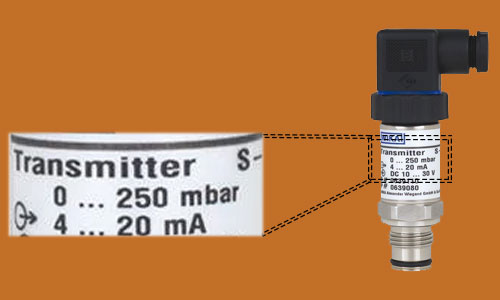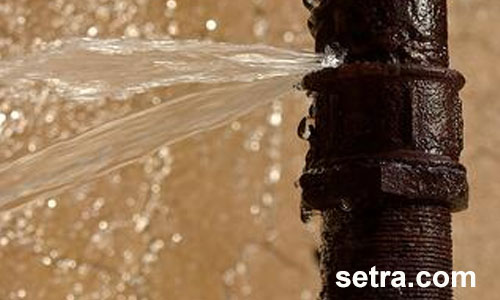Pressure Range Explanation in Pressure Sensors
Pressure Range
The pressure Range is the maximum or the lowest to the highest value of pressure that a pressure sensor can measure accurately.
For example, if you have a pressure sensor with a 1000 psi maximum range, it can not read the pressure values beyond 1000 psi.
Therefore, as a general rule, it is better to choose a pressure sensor that gives 40% to 50% more than the maximum rated pressure. Its benefit is that the sensor will perform better because it doesn’t get pushed to its limits all the time.
Find the best Pressure Sensor for your specific needs in our store.

Vacuum
A vacuum pressure can be defined as any pressure between 0 PSIA and 14.7 PSIA. To view vacuum pressure in our stock, please check out the vacuum pressure.
It is an empty space in which there is no matter, a condition with negative pressure below the local atmospheric or barometric pressure that can occur on the surface of the earth and using ambient pressure as the reference.
It can be divided into different ranges such as low, high, and ultra-high vacuum.
A differential pressure sensor that has one port open to the atmosphere is suitable for measuring a vacuum.
Compound Pressure Range
A sensor capable of compound pressure range can measure both positive and negative pressures.
Also, the sensor is zero-referenced at ambient pressure and is suitable for use in low and medium pressure range, gauge referenced sensors.
A compound pressure range sensor can be used in:
- Building climate controls
- Refrigeration (HVAC/R) (vented or sealed)
- Leak testing of pressurized lines
- Compression equipment
- Water pumps (suction & discharge)
- Test chambers in labs
- Vapor recovery
- General-purpose low-pressure measurements
Step here to view information's about Microsensor, one of leaders in pressure measuring field.
Span
It is the difference between the lowest value point and the highest value point of a measurement device.
FS – Full Scale / Full Span
The difference between the highest and lowest limits of the pressure range. Sometimes it is used to describe errors as a percentage instead of measurement units and overpressure ratings for devices with many different pressure ranges.
FSO – Full-Scale Output / Full Span Output
Difference between the lowest and highest electrical output signals of the specified operating pressure range. Also, it can be defined as the output signal or the reading displayed when applying maximum measurement for a given device.
URL – Upper Range Limit
It is used to define as a factor of the maximum pressure at which a certain device or sensor can be set to measure.
LRL - Lower Range Limit
It is used to define as a factor of the minimum pressure at which a certain sensor can be set to measure.
Proof pressure (Overpressure)
Overpressure means the maximum pressure outside the pressure range that can enter a pressure sensor without damaging the sensor and having a detrimental effect on sensor operational performance.
In fact, after stopping applied pressure, the sensor quickly returns to its normal state and does not malfunction.
want to see the pressure sensors category? Click on the link to get the full product on the pressure sensor
Burst Pressure
Burst Pressure indicates the maximum tolerable pressure for the sensor (outside the sensor pressure range) and If more than this pressure is applied to the sensor, it will cause the sensor to break, damage the diaphragm, cause leakage and destroy the internal circuits of the sensor.

Maximum Allowable Working Pressure (MAWP)
Maximum Allowable Working Pressure or MAWP is the maximum operating pressure allowable at the top of the vessel in its normal operating position at a specific temperature determined for that pressure.
It helps to determine the safe internal or external pressures that the device can tolerate. The value of MAWP is not constant throughout the lifetime of the sensor. It decreases due to wear, fatigue and corrosion on carbon steel.
Rangeable (Adjustable)
Pressure Transmitter Rangeable is related to measurement equipment whose output signal is adjustable to re-range the transmitter by the user to a different scale and indicates how much the output can be adjusted.
By adjusting zero and the span to 100% FS URL (Upper Range Limit) of the instrument, a rangeable instrument can be rescaled.
It allows us to standardize the configuration of a product and adjust it to use in several different applications. Externally accessible variable potentiometers, push-button controls, or digital communications are different methods used to re-range the output signal of a measurement device.
Some instruments have restrictions on scale reduction, which is defined as a maximum-scale ratio. When re-ranging a device to a reduced span, the accuracy of the device will be exposed to danger.
There is a fixed percentage of full-scale accuracy to a certain level of turndown that above it the percentage of full-scale accuracy maximized.
Turn down (TD) or Rangeability
It is defined as the relation between the maximum span (URL) and the minimum span (minimum calibrated span) or the ratio between the maximum to minimum possible span settings for a transmitter.
Turndown ratio also indicates the rangeability of an instrument. For example, a pressure transmitter range is 0 - 1000 bar and will be used on 100:1, indicating which pressure transmitter will measure 0 to 10 bar. TD = URL/ Calibrated Span.
Please refer to other pressure sensor articles for more information:
All Temperature Types Regarding Pressure Transmitter
Output Signal for Pressure Sensors
Resolution, Sampling rate, Response Time of Pressure Sensors
An Eye-Opening Guide To Pressure sensor Types: Everything You Need To Know
Recent Posts
-
Booster Pump Troubleshooting and Maintenance: How to Fix and Prevent Common Issues
1. Introduction Imagine turning on your faucet only to be greeted with a weak trickle of water when …22nd Apr 2025 -
Energy-Efficient Booster Pumps: Selection and Tips for Maximizing Performance
1. Introduction Imagine never having to deal with fluctuating water pressure, noisy pumps, or skyroc …19th Apr 2025 -
Booster Pumps for Sustainable Water Systems: Irrigation and Rainwater Harvesting Solutions
1. Introduction Water scarcity is no longer a distant threat—it’s a reality affecti …16th Apr 2025




